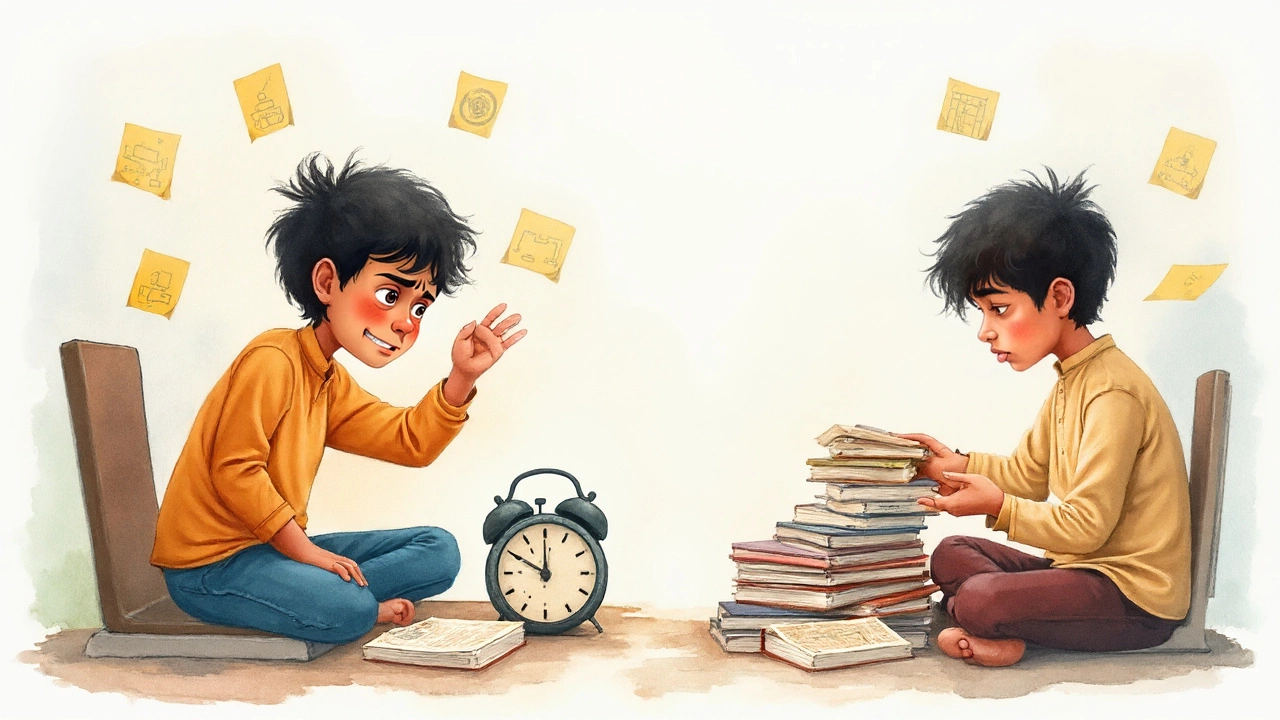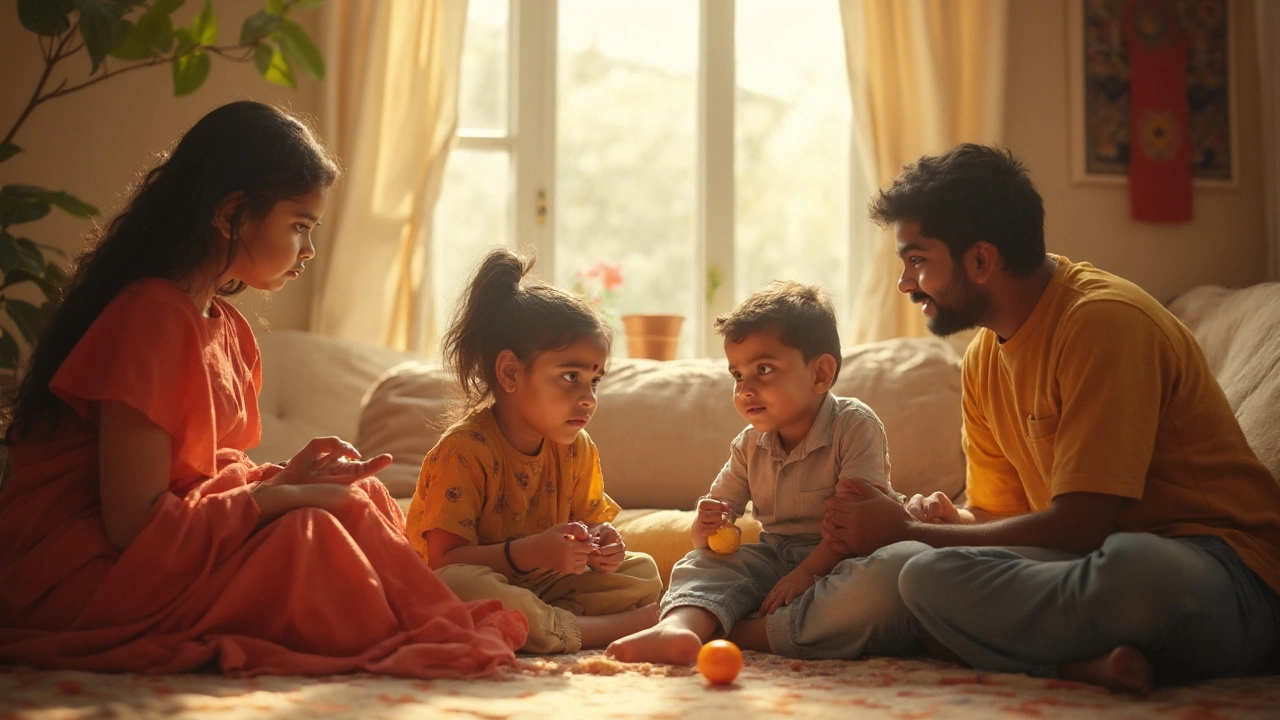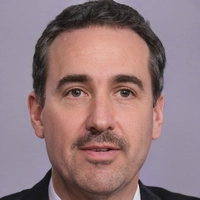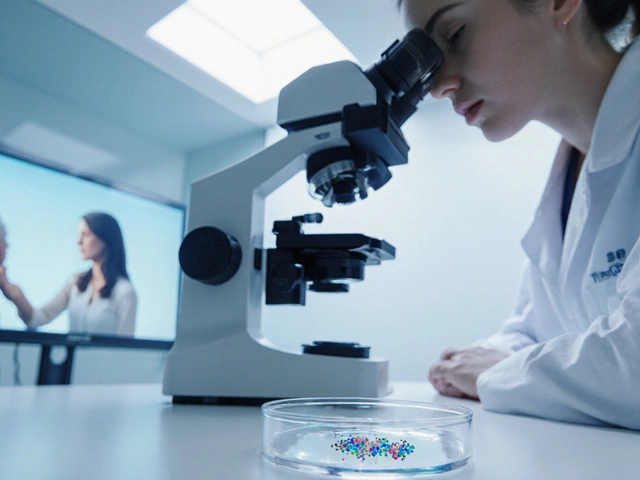You hear it at playgrounds, in schools, at family gatherings—someone wonders out loud if ADHD and autism are just different names for the same thing. Maybe you know a kid, or even an adult, who’s been diagnosed with ADHD and shows signs a lot like autism. So, what’s the deal? Are they cousins in the brain wiring family, or is lumping them together missing something big? Here’s the honest, nitty-gritty look.
What Are ADHD and Autism—And How Are They Alike?
First thing: ADHD stands for Attention Deficit Hyperactivity Disorder. Autism, or Autism Spectrum Disorder (ASD), is a wider, more complex set of brain differences. Both are “neurodevelopmental disorders,” which means your brain works a bit differently from the so-called typical way, right from young age. You can’t catch either one, and there’s no “growing out of it.” But here’s where it gets interesting—they come with overlapping symptoms that can confuse just about anyone, even specialists who see this stuff daily.
ADHD is all about focus, impulse control, and sometimes hyperactivity. You might spot a kid fidgeting non-stop, blurting out answers, or losing their backpack three times a week. Autism, on the other hand, is known for communication and social skill issues, narrow interests, and sometimes repetitive behaviors. But the lines blur. About half the people with autism also show symptoms of ADHD. And about one in five kids with ADHD meet criteria for autism. So, no, you’re not imagining the similarities.
Both ADHD and autism run in families, sometimes swimming together in the same gene pool. Studies (Sweden’s 2014 twin study was pretty convincing) show if you have a sibling with ADHD, your odds of having autism jump by 17%. That gene link helps explain why so many kids with one get checked for the other.
Here’s a quick list of the overlap:
- Struggling to pay attention in noisy places
- Having trouble making or keeping friends
- Getting really “stuck” on favorite topics or routines
- Issues with impulse control
- Sensitivity to lights, sounds, or textures
But don’t get fooled. No two brains are copy-paste. Just because someone with ADHD flaps their hands or avoids eye contact doesn’t mean they fit the criteria for autism, and vice versa. Tuning in to these differences matters for getting the right help.

How ADHD and Autism Differ—Spotting the Dividing Line
So, if there’s so much overlap, is ADHD a type of autism? The short answer: No. They are officially different diagnoses, partly because they carry their own sets of traits, challenges, and strengths. The American Psychiatric Association has kept them separate in its DSM-5—basically, the playbook for mental health pros—since 2013.
The key differences pop out when you look at core symptoms. ADHD’s biggest hurdles are around focus, controlling impulses, and managing energy. You’ll see a lot of jumping from one topic to another, trouble finishing homework, or not being able to wait their turn. Autism, on the flip side, zeroes in on how someone communicates, interacts, and deals with routines. Hard time figuring out sarcasm, not picking up on body language, or sticking religiously to rituals? More likely autism.
Take social life. Kids with ADHD might have loads of friends, but get in trouble for being wild. A kid with autism might not mind being left alone, or could seem clueless about social rules—not because they want to break them, but because the whole system just feels off. Then there’s communication. Lots of people with ADHD talk non-stop or interrupt, but someone with autism might use language in unusual ways, repeat phrases, or avoid chit-chat altogether.
Sensory differences add more contrast. People with autism can be super-sensitive to tags in shirts or fluorescent lights; some even crave deep pressure or need to rock back and forth to feel calm. While people with ADHD do sometimes have sensory quirks, it’s not a deal-breaker for a diagnosis.
One more biggie: the “special interest.” People with autism often find themselves obsessed with trains, sea creatures, or even obscure subway routes. They’ll deep-dive for hours, and it can be hard to pull them away. People with ADHD also hyperfocus, but it’s way more random and doesn’t stick on the same thing for months or years.
When it comes to treatment, the differences matter a ton. ADHD responds well to stimulant meds—the kind millions of kids take and that adults sometimes swear by. Autism’s traits, especially the social and communication stuff, can’t be “fixed” with a pill. Instead, speech therapy, occupational therapy, and certain behavioral approaches can help a lot. Getting misdiagnosed or ignoring the mix can send families on a wild goose chase, wasting time and energy instead of getting what actually helps.

Helping Kids and Adults When ADHD and Autism Collide
If you’re reading this and thinking, “Sounds like my kid is both,” you’re not alone. It’s possible to have both ADHD and autism—called a dual diagnosis. This can make life more complicated, but also explains why some strategies fall flat. The good news? There’s real, practical stuff you can do to smooth the road, no matter what labels you’re juggling.
First tip: Don’t panic-compare your kid (or yourself) to charts or online checklists. It’s helpful to keep notes on what’s actually happening—focus, friendships, sensory meltdowns, sleep issues—so your doctor can see the full picture, and not just what flashes during a rushed appointment.
Get the right team. An evaluation from someone with experience in both ADHD and autism is golden. Pediatric neurologists, developmental pediatricians, or clinical psychologists who see both day in and day out can spot tricky overlaps. The earlier you get a plan, the sooner you’ll see what works—and what needs a switch-up.
Support at school is a lifeline. Both ADHD and autism can throw a wrench into classroom routines, but each in their own way. ADHD is usually handled with things like movement breaks, shorter assignments, or fidget tools. Autism-friendly plans might focus more on visual schedules, social skills coaching, or sensory breaks. If both are in play, push for blended strategies. Many schools can create an Individualized Education Plan (IEP) tailored to the mix of needs, not just one label.
Daily life routines help more than you might think. Even ten extra minutes to get out the door in the morning or a visual checklist beside the toothbrush can save lots of drama. Some kids thrive with timers or step-by-step plans. Others need reminders that aren’t barked from across the room but written or texted, so it feels less like pressure and more like teamwork.
Meds? Don’t rush it, especially with dual diagnoses. Stimulant meds for ADHD can help with focus and impulse control, but about one in three kids with autism find stimulants increase anxiety or moodiness. Always start slow and watch how things play out over weeks, not just days. On the flip side, some families find non-stimulant meds (like guanfacine) settle things without as many side effects.
Building social skills is another must. Kids and adults who have both ADHD and autism tend to make fast friends but lose them just as quickly, either from too much energy (ADHD) or missing subtle cues (autism). Social stories, role-playing, and video modeling can boost confidence and give real strategies for “reading the room.”
Parenting is no walk in the park with either of these diagnoses—but it’s not the end of the world. Parent support groups, whether live or online, can be a sanity-saver. Getting honest with teachers, friends, and extended family about what works and what doesn’t can build a circle of people who won’t judge you for avoiding crowded malls or using headphones at dinner.
Last, advocacy is key. The more you learn about how ADHD and autism really work—in your child or yourself—the better you get at asking for what you need, whether it’s the right classroom seat, a quiet space at work, or just five minutes of peace at home. Real change starts with busting the old myths and knowing that facing both is possible. And if someone ever tells you ADHD is just another word for autism, throw them this article and let them know it’s a lot more complicated—and a lot more hopeful—than that.
If you remember one thing, know that labeling brains isn’t about boxing people in—it’s about drawing a map. Labels like ADHD and autism can help you find your way, join the right conversations, and unlock the way you (or your kid) thrives best. Both are part of the bigger, messier, and honestly more interesting world inside our heads.






